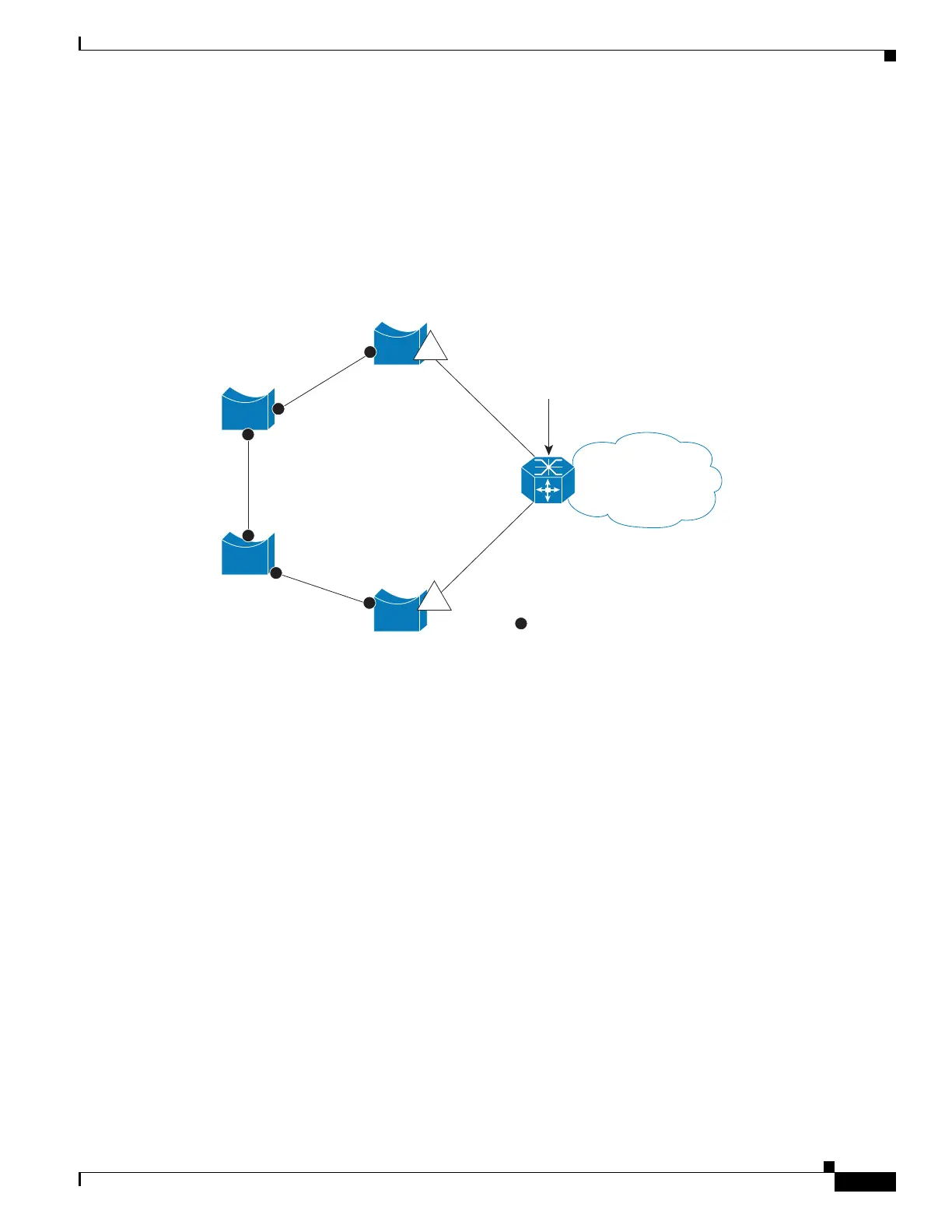1-3
Catalyst 3750-X and 3560-X Switch Software Configuration Guide
OL-25303-03
Chapter 1 Configuring Resilient Ethernet Protocol
Understanding REP
You can construct almost any type of network based on REP segments. REP also supports VLAN
load-balancing, controlled by the primary edge port but occurring at any port in the segment.
In access ring topologies, the neighboring switch might not support REP, as shown in Figure 1-3. In this
case, you can configure the non-REP facing ports (E1 and E2) as edge no-neighbor ports. These ports
inherit all properties of edge ports, and you can configure them the same as any edge port, including
configuring them to send STP or REP topology change notices to the aggregation switch. In this case,
the STP topology change notice (TCN) that is sent is a multiple spanning-tree (MST) STP message.
Figure 1-3 Edge No-Neighbor Ports
REP has these limitations:
• You must configure each segment port; an incorrect configuration can cause forwarding loops in the
networks.
• REP can manage only a single failed port within the segment; multiple port failures within the REP
segment cause loss of network connectivity.
• You should configure REP only in networks with redundancy. Configuring REP in a network
without redundancy causes loss of connectivity.
Link Integrity
REP does not use an end-to-end polling function between edge ports to verify link integrity. It
implements local link failure detection. The REP Link Status Layer (LSL) detects its REP-aware
neighbor and establishes connectivity within the segment. All VLANs are blocked on an interface until
it detects the neighbor. After the neighbor is identified, REP determines which neighbor port should
become the alternate port and which ports should forward traffic.
Each port in a segment has a unique port ID. The port ID format is similar to that used by the spanning
tree algorithm: a port number (unique on the bridge), associated to a MAC address (unique in the
network). When a segment port is coming up, its LSL starts sending packets that include the segment ID
and the port ID. The port is declared as operational after it performs a three-way handshake with a
neighbor in the same segment.
E1 and E2 are configured
as edge no-neighbor ports
273792
REP ports
REP not
supported
E2
E1

